“It became increasingly plain to me that the mandala is the center. It is the exponent of all paths. It is the path to the center, to individuation.” — Carl Jung
Over the years, I have created mandalas for the chakras, the elements, the sephirot, and the wheel of the year. Many times after I take a class, attend a lecture, participate in a ritual, or read about a spiritual topic, I find myself making art about it as a way to sink deeply into the Mysteries of each and get some “hands-on” experience with these spiritual energies. The mandala creates a container that aptly holds my explorations and reflects them back to me.
On the personal level, creating mandalas can be both a healing and an introspective practice that allows us to explore what Jung termed the “Self,” the archetype of wholeness and unification of our conscious and unconscious parts. After a few years of creating mandalas for myself, I wondered if creating them with others would foster connections of trust, cooperation, and solidarity.
Creating art is an act of magic. I am part of a community that practices magic on the regular, so I wanted to find ways to use visual expression as a tool to create magic for the community, magic that would bring people together in time and would continue to live through the artifact created — a mandala that would act as a sigil and a talisman to radiate out the intention and energy of the original working and a magnet to attract those energies to support the community.
My first experiment was in 2013 with members of the DC Pagan community at the Open Hearth community center. This was a time of some upheaval in the local community. As Jung said in 1957, a mandala “appears as a compensatory archetype during times of disorder.” I wouldn’t say that the magic of that mandala kept the center open or the local community cohesive, but it did give a focal point for our desire for the type of community that calls for all hands on deck to create the world we want to live in.
Last year, I wanted to bring an art project to the community again, so I facilitated the design, creation, and charging of another mandala at the Sacred Space conference in March 2024. On the first day of the conference, we had a session to brainstorm the design of the mandala. Lots of ideas got thrown around. Sometimes it felt like we would not reach a cohesive design, but I had faith in the caldron of creative chaos into which we put all our ideas and stir and stir until something starts to congeal, develop, and rise out of the caldron. Eventually, a design was sketched out and agreed to by those in attendance.
Throughout the conference, attendees were encouraged to add their energy to the magic by adding washable, acrylic paint to the canvas. Most had little to no experience with painting and were apprehensive at first, but after a few brushstrokes they began to gain confidence, if not skill. Others came by and added their energy without adding paint — and that was totally welcome!
At the end of the weekend, we held a session to ritually charge the mandala in sacred space. The mandala was meant to work on two levels: the physical as a visual expression and reminder of the intention and work we did together and the astral as a thoughtform and seed that would live in the astral for anyone at the conference to use to support their community (defined for this working as the people at the conference and the people in their home covens, circles, groups).
As a temporary magical artifact, the mandala, as pictured above, was perfectly acceptable — it had done its job. Maybe it’s the artist in me, but it wasn’t a finished piece. Which makes sense — the work is ongoing and we only worked on it for a weekend. The canvas sat on my easel for quite a few months. I needed to live with it and allow it to sink into my psyche before I could clean it up. I wanted to make sure that I honored the work that went into the image while pulling it into a cohesive image.
For those unfamiliar with my painting process, I work in layers of words and images that are often not seen in the final work. These prayers, symbols, and the energy they carry are still there and doing their work — they are just not visible on the surface. I struggled with whether using my typical process would be OK for this work, or would I just be erasing the work of others to satisfy my own aesthetics. And to be totally honest, I’m still not sure, but I needed to move forward. I honored the color choices people made, but I tied everything into something that could be read as one image.
The major deviation from the original design is in the center of the mandala. I felt the “lollipop” people in the center of the original were too static. They didn’t have feet! I kept getting the message that they needed to dance and move in joy. Also, the original seed in the very center didn’t read as such, so I changed that to an acorn of the white oak (Quercus alba), a native tree to the eastern United States and a symbol of strength and longevity.
The Sacred Space Community Mandala will be displayed at this year’s conference in March. What is really exciting is that the painting will be auctioned during the conference, with the proceeds going toward funding scholarships for people who need financial assistance to attend the 2026 conference!
Comments?
I would love to hear your thoughts, questions, and experiences. Did you participate in the making of the mandala at the conference? Have you made art in community? Do you integrate your art with your spiritual or magic practice?


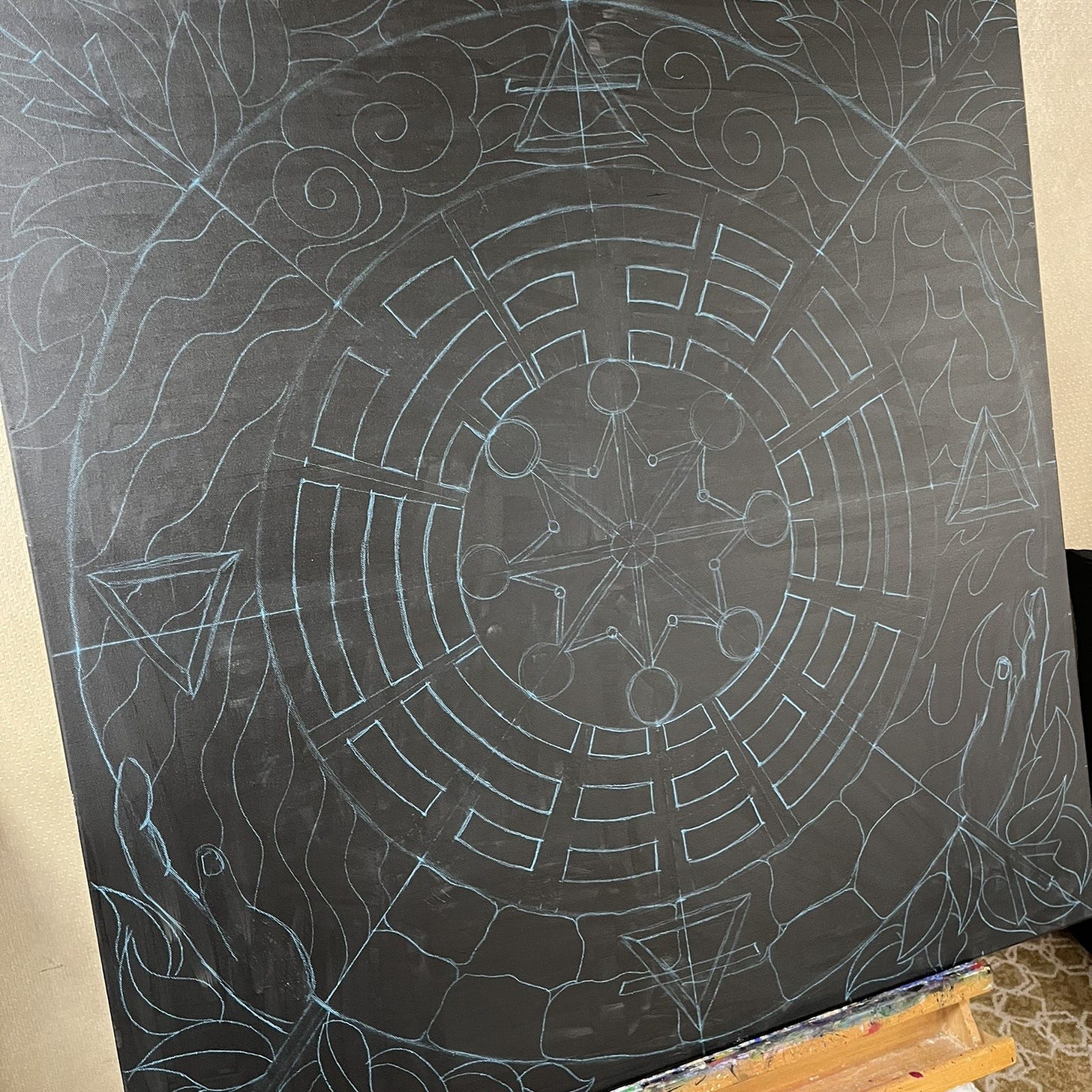
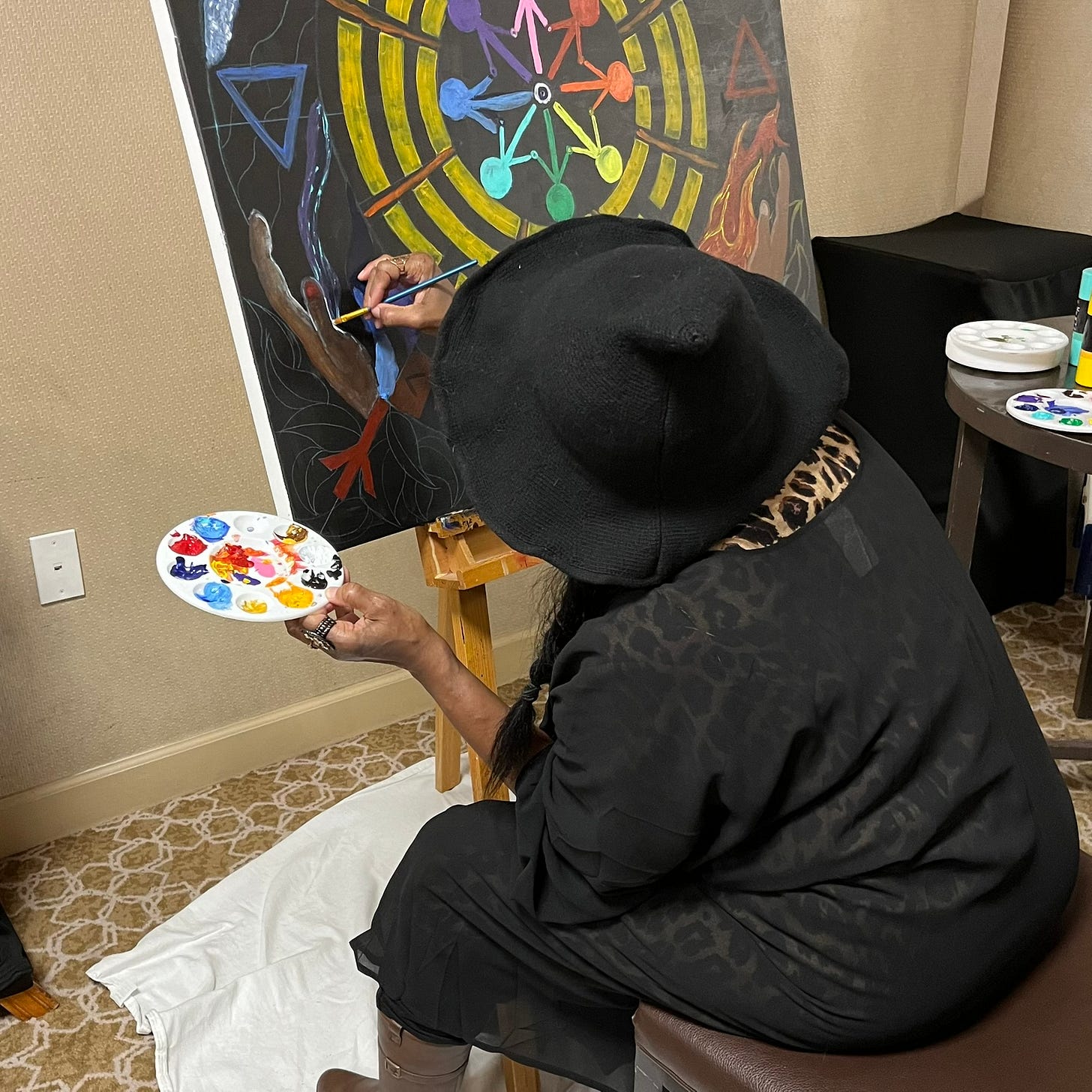
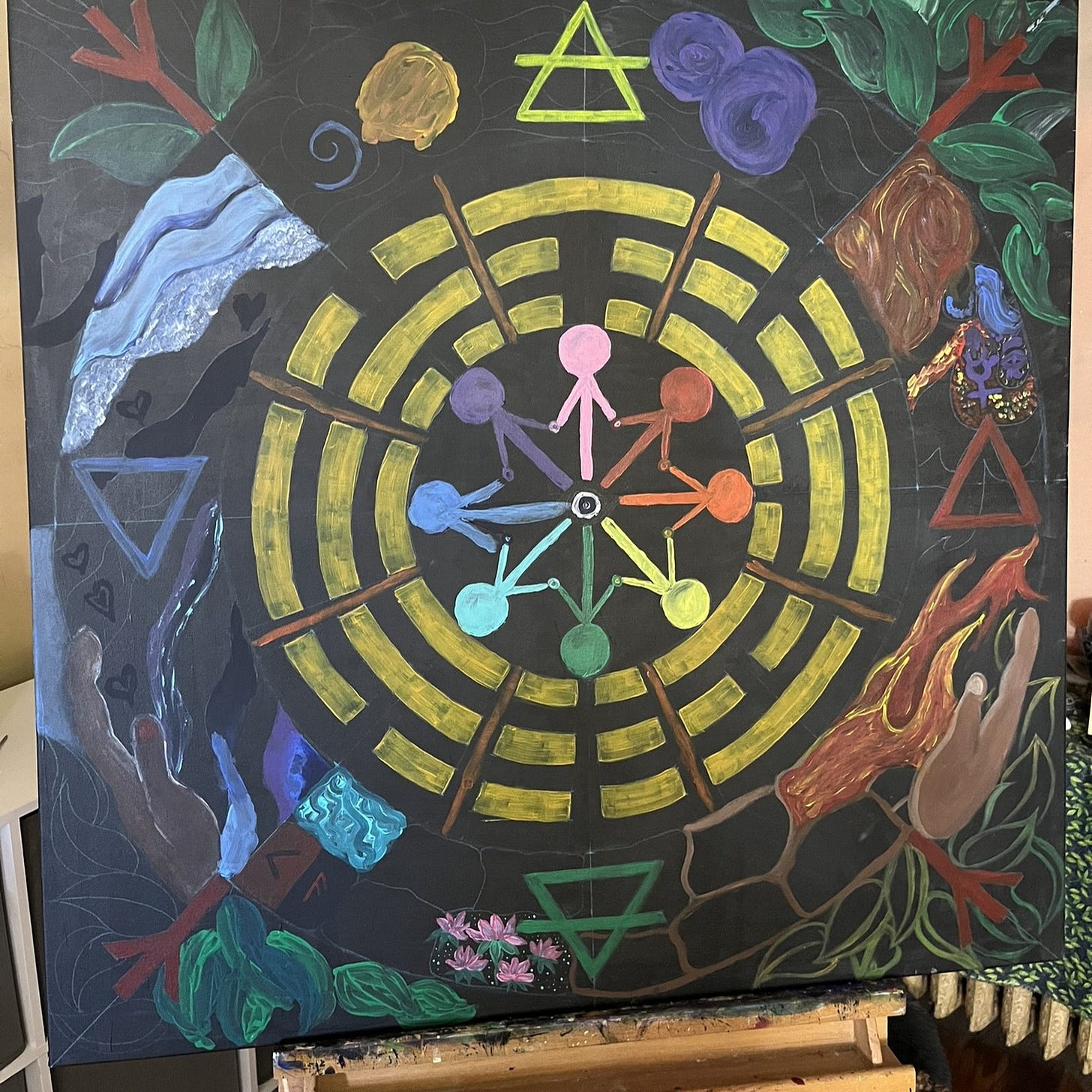
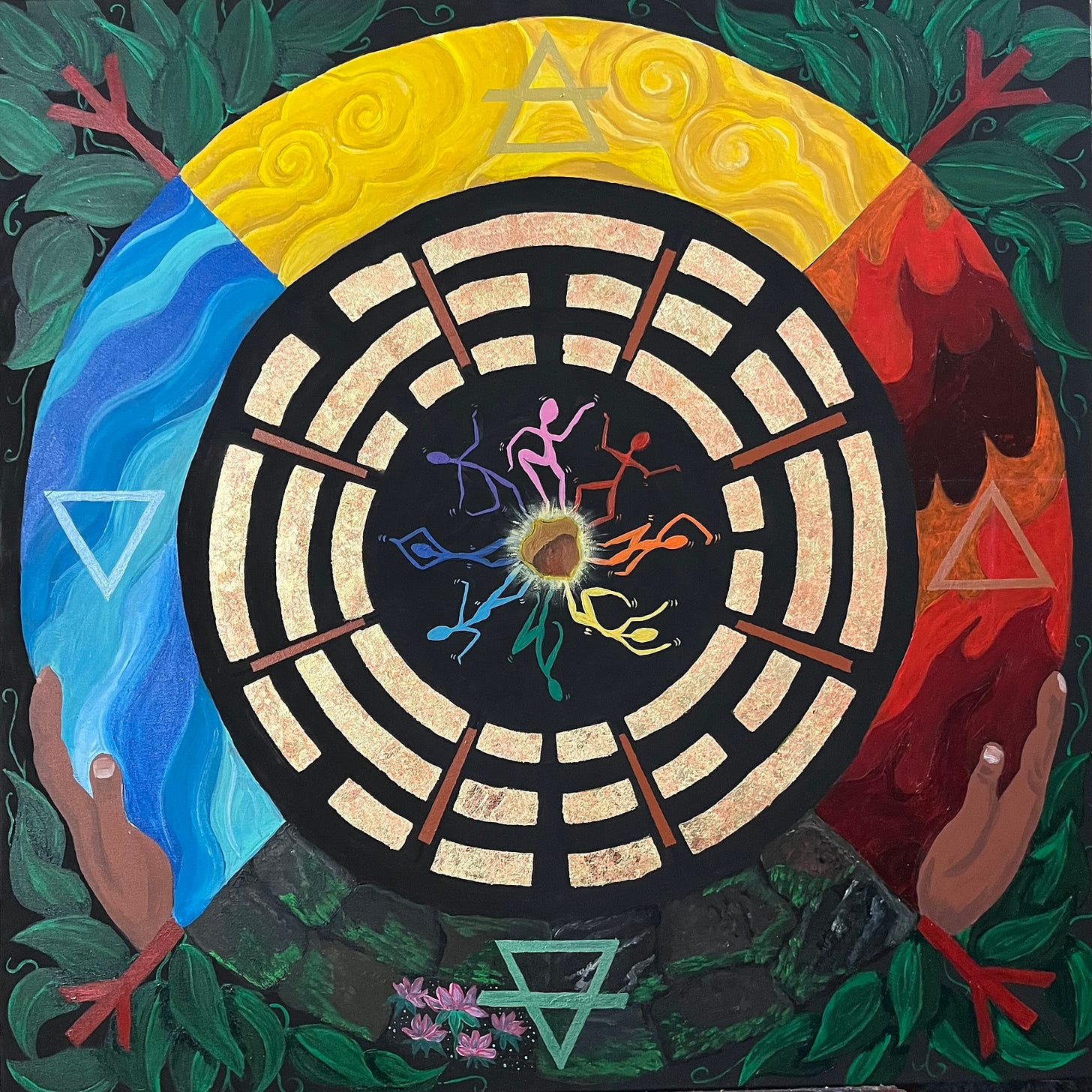
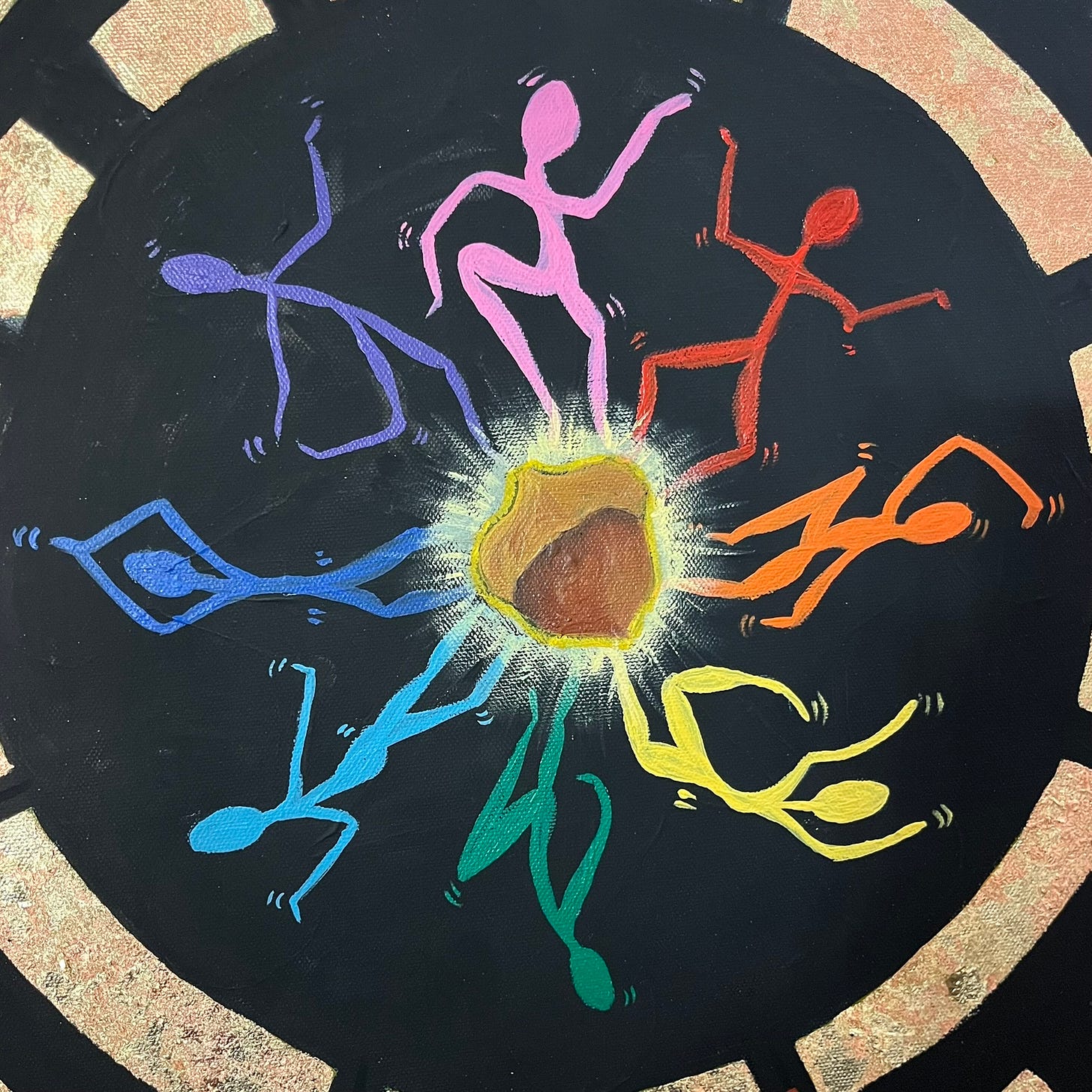
I love it. I also honor your decision to move the collaborative piece through your creative process. Sometimes artifacts of a group process need finishing and burnishing to reveal their mystery, essence, and true beauty.
Love you, love your work...
In general I love the concept and what you have done with it. The one thing that lept out at me was how very thin all the figures in the center are. Perhaps this is because they are spirits rather than people, but I should think spirits would also come in various sizes. Other than that, I think it's fabulous!